By the end of the 2018/19 season, Marco Silva’s stock was sky-high. Everton had just finished eighth in the Premier League after a strong end to the campaign, narrowly missing out on a UEFA Europa League qualification place by three points.
There was new-fangled confidence in the team and the coaching staff from the fanbase, an element that is desperately absent from the Goodison Park crowd today.
However, within four months of the 2019/20 season, Silva’s reign unravelled at lightning speed. His stock plummeted lower than a Bear Stearns hedge fund and the former Olympiacos boss was dismissed by Farhad Moshiri’s ruinous sleight of hand.
Silva did not enter work again until the summer of 2021 when the newly-relegated Championship side Fulham came knocking. The wounded 44-year-old rejected advances from Turkish giants Fenerbahçe to confirm his appointment to the dugout at Craven Cottage.
Silva still had a point to prove in English football and prove it he certainly has as a free-scoring Fulham have been promoted at the first time of asking, playing some of the most scintillatingly enchanting football in the country this season.
Unlike Bear Stearns, Silva’s stock is now on the up again, and so are the Lilywhites who will play in the Premier League next season, this time hoping to keep the ship afloat for at least another year.
But how did Fulham manage to win the Championship relatively unscathed? This article will be a tactical analysis of the Londoners under Marco Silva. It will be an analysis of the tactics that were key to their early promotion.
Formation and possession style
Despite being an adopter and an advocate of Vitor Frade’s tactical periodisation model, made famous by the legendary Portuguese manager Jose Mourinho, Silva has been a proud proponent of the philosophy of the Spanish ‘juego de posicion’, more commonly known in England as positional play.
To play this style of football, a team needs to possess players with an abundance of technical quality. The side must also be set up in a formation that provides a lot of triangular passing connections such as the 4-3-3, the 4-2-3-1 or the 3-4-3 diamond.
Silva has been an exponent of the 4-2-3-1 throughout his time in England and this certainly has not changed since his arrival in London, deploying the conventional structure in 65 percent of his games in charge so far in all competitions.
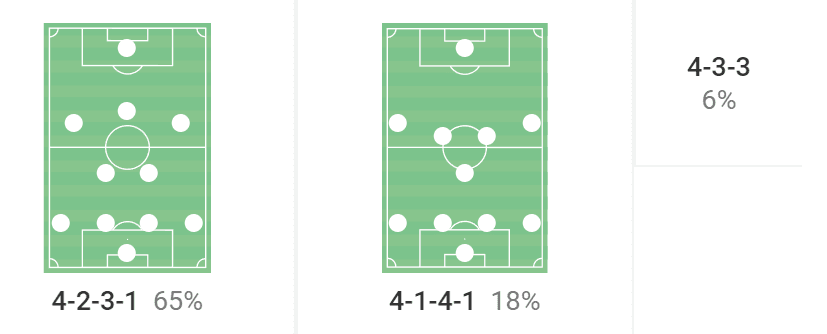
However, Fulham certainly have been no stranger to the 4-3-3 or its more conservative brother, the 4-1-4-1.
Teams that generally adhere to the positional play blueprint of football dominate possession. This is because of the philosophy’s insistence on ball retention and patient passing style. Fulham are no different.
The Cottagers are sitting pretty in second on the possession charts for the EFL Championship right now. Only Russel Martin’s Swansea City are averaging a higher number in this campaign.
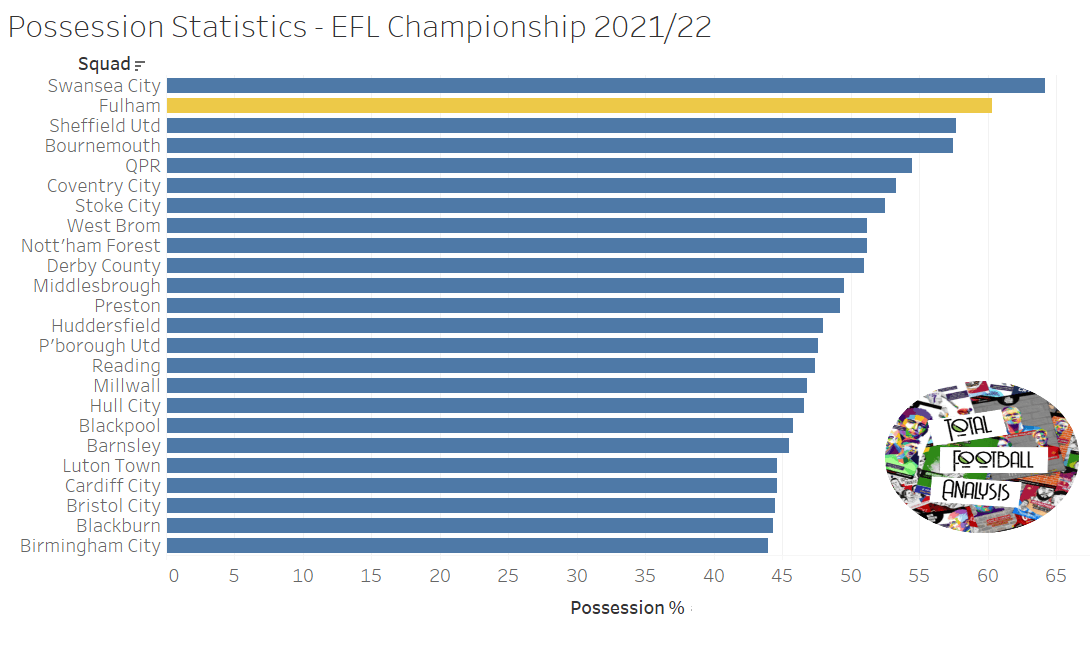
Silva’s champions-elect are currently averaging 60.3 percent of the ball in every match. The style of football is undoubtedly possession-based.
Nevertheless, putting such an emphasis on ball circulation and retention can be rather underwhelming and tedious to watch at times. Louis van Gaal’s Manchester United are perhaps the greatest example of this purposeless style.
But credit to Silva and his coaches, as well as the players executing the game-plan on a game-to-game basis, Fulham are anything but boring. In fact, they are the antithesis of uninspiring, scoring 99 goals so far. The team with the second-highest tally are Bournemouth with 69.
Plotting the total goals versus the total expected goals (xG) in one graph makes for a ludicrous and humourous site to see.
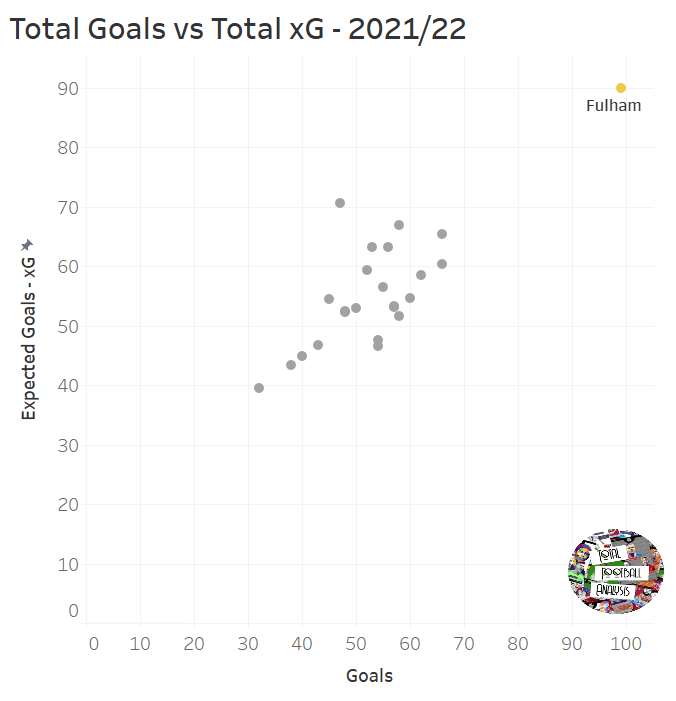
Fulham are so far out of reach from the rest of the league in goals and xG that the plots resemble a flurry of flies fluttering towards a flickering light.
Purely by analysing the most basic of statistics, Fulham look like a wonderful side. Dominating games while scoring goals like they’re going out of fashion. Now, let’s take a look at the in-depth tactics behind their exuberant success.
Advancing forward from deeper areas
A predominant feature of the modern game is passing out from the back, trying to lure the opposition to press you during the build-up phase before exploiting the gaps in their pressure with calculated, precise short passes.
Fulham’s approach is no different. However, irrespective of whether the Lilywhites set up in a 4-3-3 or a 4-2-3-1, the shape always resembles the former in deeper areas. A noticeable element of their tactics in the build-up phase is that the players’ positioning is very wide.
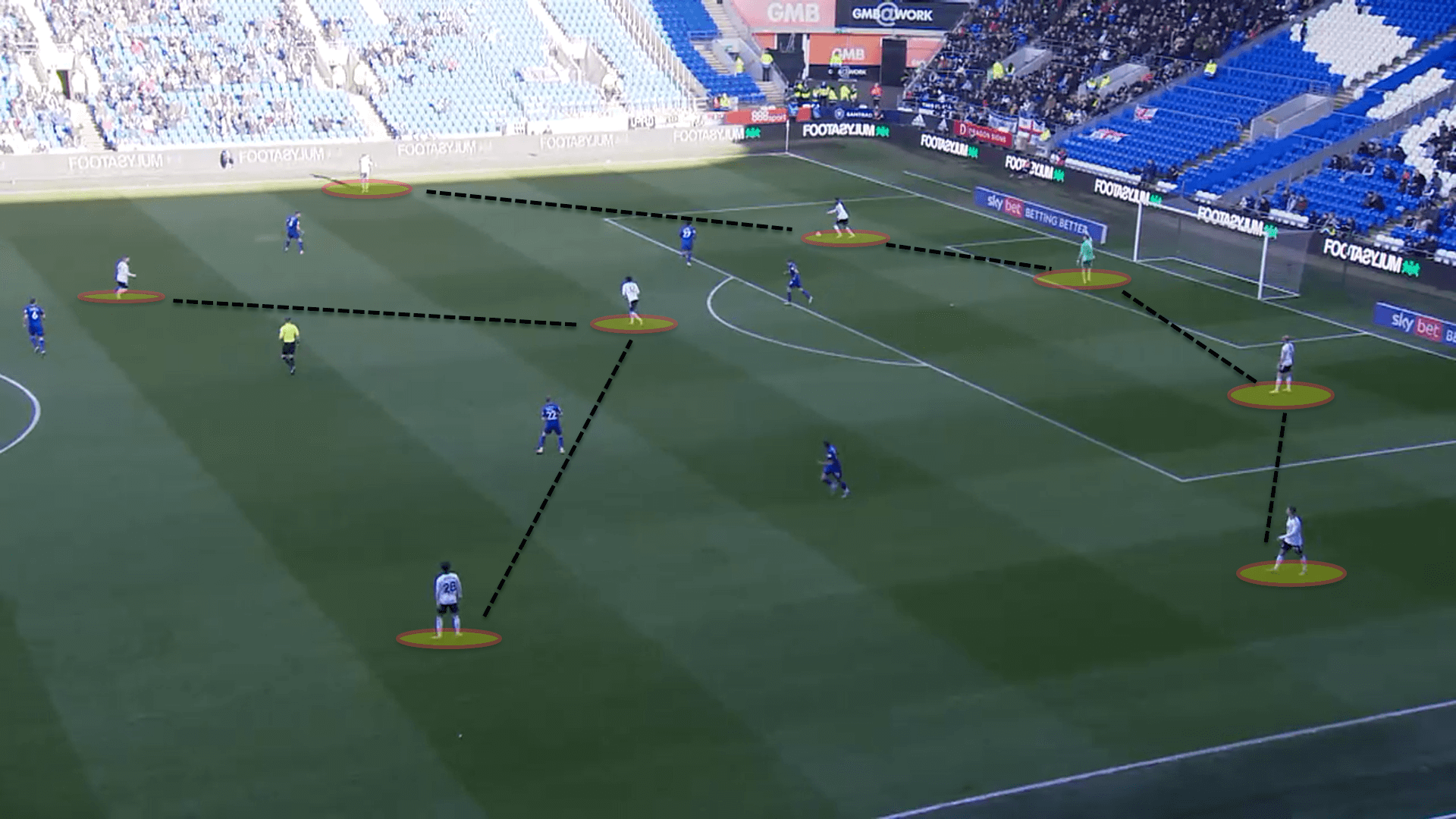
The side sets up this way because it stretches the opponent’s press vertically and horizontally which creates gaps to play through. If the players are too narrow, it will be easy for the defending team to remain compact and defend the spaces. Too wide and it makes passes much more difficult because, by default, it is tougher for a pass to be accurate the longer the distance is.
As shown in the previous image, Fulham’s midfield in particular remains very wide. The side maintain a single pivot and two ‘8’s in this phase with the former sitting behind the opponent’s first line of pressure. The two advanced midfielders will typically stay in the halfspaces and sit behind the defending side’s midfield.
Further up the pitch, the wingers are then hugging the touchline to stretch the team once more, creating gaps.
Once the pieces have been assembled on Silva’s chessboard, Fulham will try and progress further up the pitch in two manners. Firstly, the Cottagers play out to the wide areas and use combination play to bypass the press.
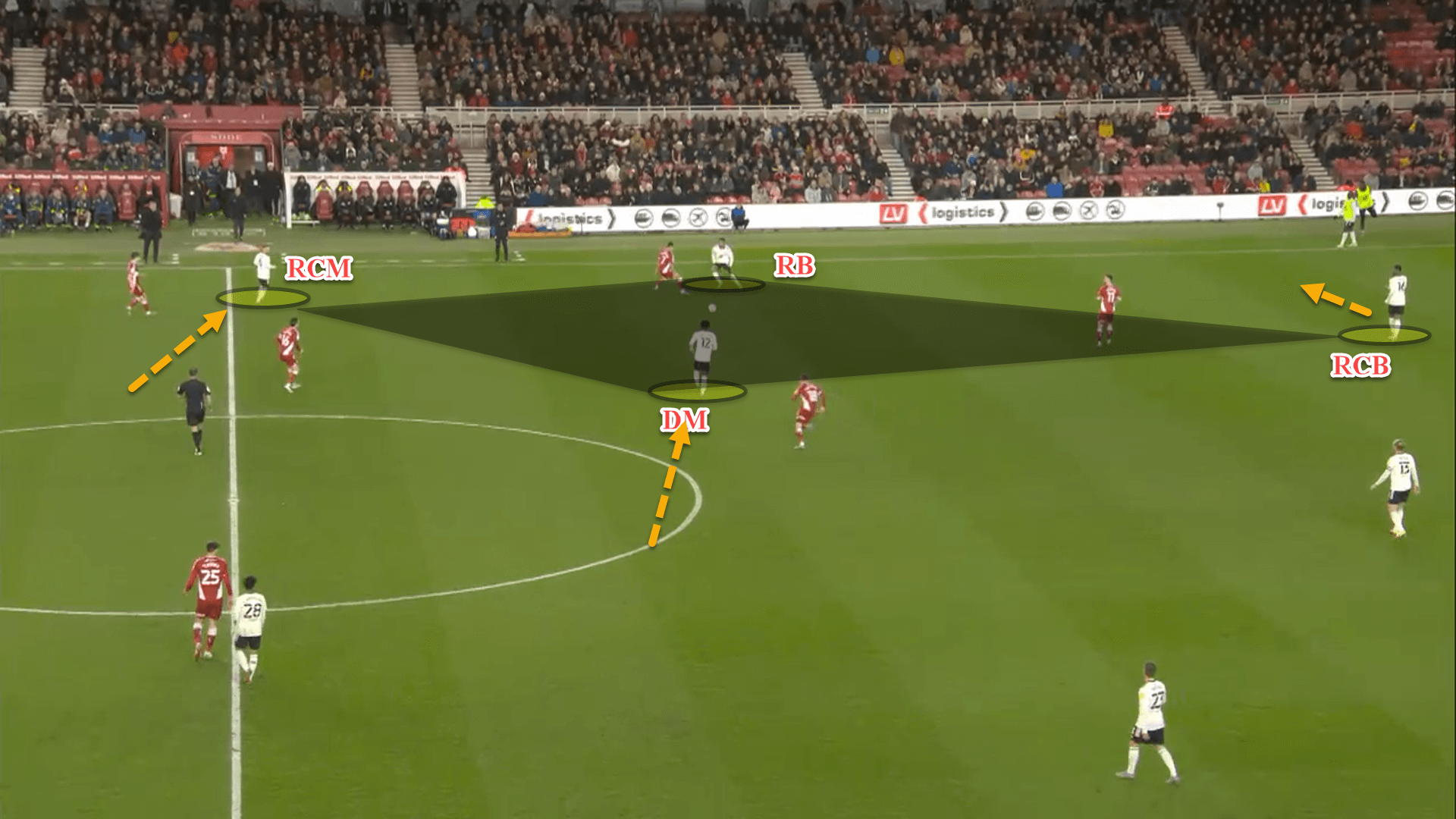
They do so by creating overloads down the sides. Using a 4-3-3 in possession gives the side the ability to form triangular and diamond-shaped passing structures around the ball.
Using the wonderful technical ability of their players, Fulham can play around the opponent’s oncoming players and move the ball into more advanced areas.
If the overload isn’t working, and the opposition are effectively preventing any forward access, Fulham will try to switch the play over to the ball-far winger who remains hugging the touchline.
Having players such as Tosin Adarabioyo at the back makes this an extremely efficient form of attacking. The ex-Manchester City academy star has a remarkable passing range, like the Championship’s very own Virgil van Dijk, who can hit those cross-field switches.
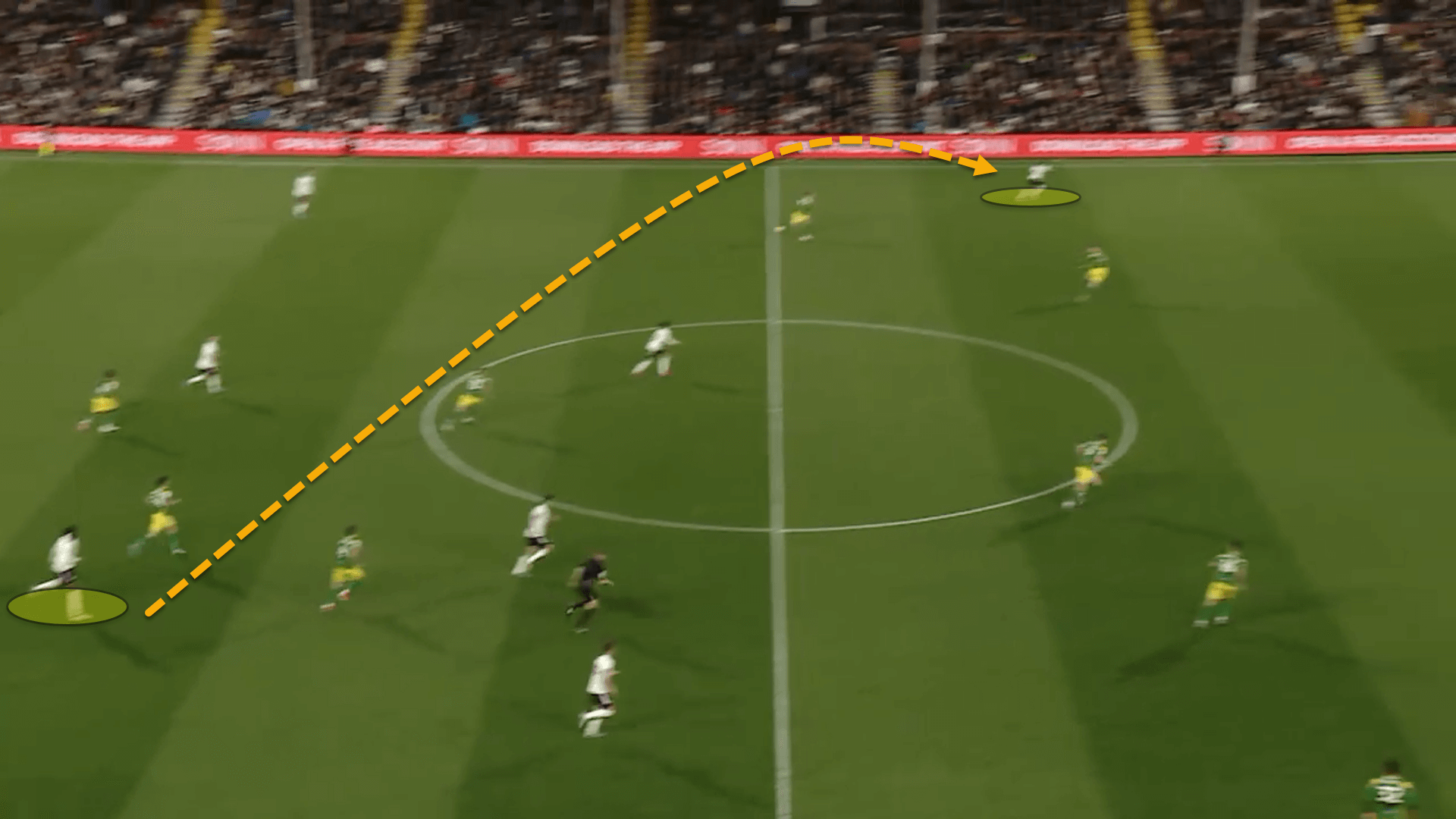
The second method used by Fulham to develop their play up the pitch is by going direct. Beautiful football doesn’t always come from elegant build-up play or sumptuous through passes into space.
There can be something charming about playing long to an aggressive and physical number ‘9’, a simplistic passing pattern deep-rooted in the English game. Having a player like Aleksander Mitrovic certainly helps.
Serbia’s all-time top goalscorer has been dazzling this season, bagging himself 41 goals in 43 appearances for Fulham. Not only has his goalscoring massively improved as well as his overall link-up play, but the 27-year-old has conserved his ability to be an aerial threat that his teammates can use to move up into the final third.
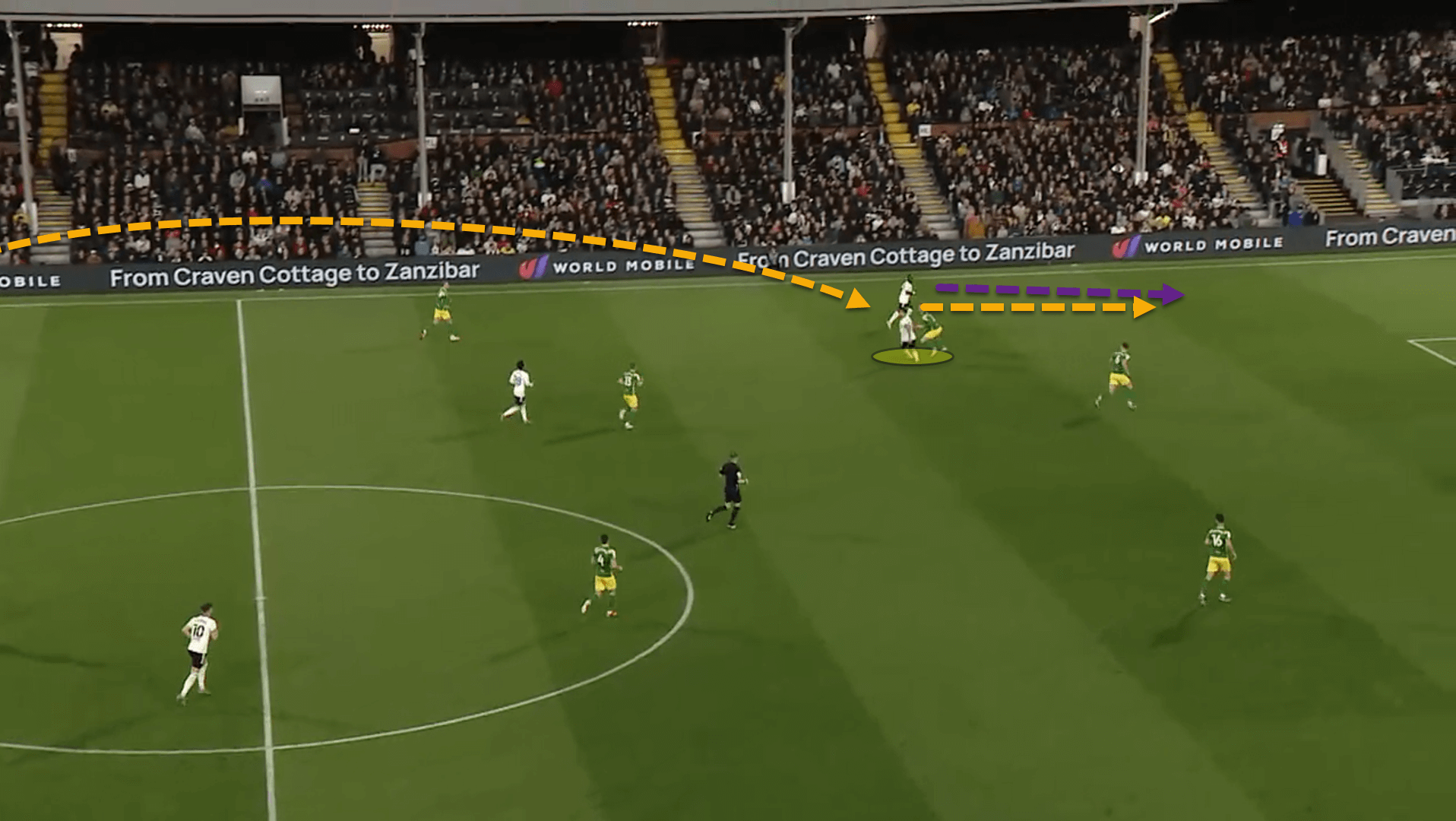
Again, having players with the excellent passing ranges of Adarabioyo or Harrison Reed makes this a lot more plausible.
This image displayed led to a goal for Fulham in a recent thwarting of Preston North End. The ball was lofted up to Mitrovic who peeled in front of Preston’s right centre-back.
The defender was originally marking Fulham’s winger Neeskens Kebano but was forced to challenge Mitrovic, leaving Kebano to run in behind and latch onto a flick-on. The play developed further, and the Liverpool-bound attacking midfielder Fabio Carvalho eventually finished the move off. A truly glorious goal for football’s anti-purists and one that the late Charles Reep would be proud of.
Positional domination
Fulham are so calculated and purposive in possession under Silva. Each player is given a specific function within the system and their positioning on the field changes depending on which side the ball is on.
For instance, Silva wants his fullbacks to perform the exact same function but at different times to each other. When the ball is over on the left side and the left-back has advanced up the pitch, the right-back tucks inside and creates a temporary back three alongside the two central defenders. This is mirrored when the ball is on the right-wing too.
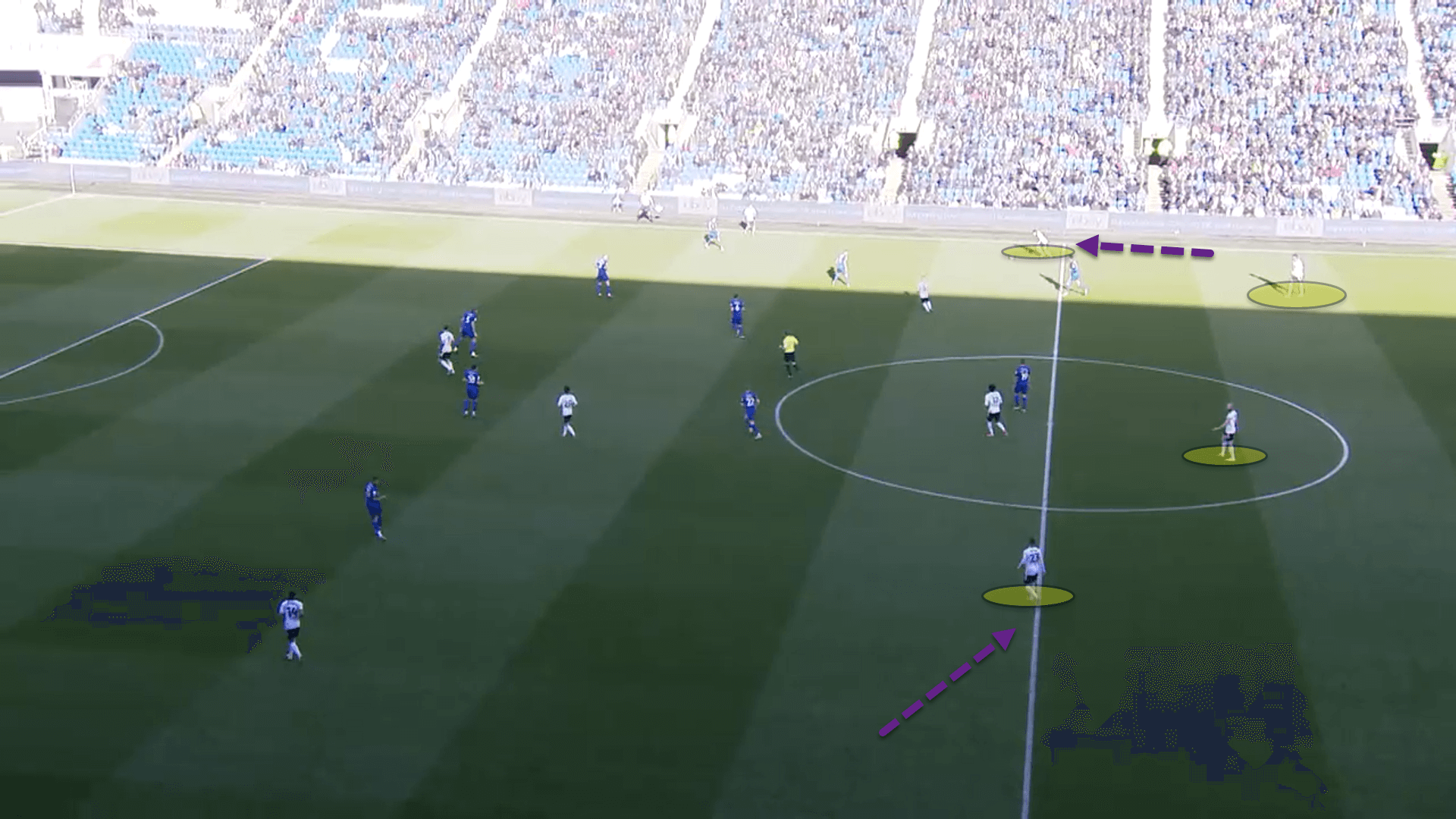
This ensures that Fulham always have three men on their first line. As most teams generally use a two-man initial pressing line, it allows them to always have a 3v2 in this area. Numerical superiority is a key element of positional play.
This is very reminiscent of van Gaal’s very own Totaalvoetbal which he has implemented in his third spell in charge of the Netherlands’ national team. Speaking in an interview back in 2o21, the legendary manager compared the use of his fullbacks to a steering wheel.
“The fullbacks have to act like a steering wheel… if Dumfries goes forward, Malacia stays back. If Malacia goes forward, Dumfries stays back.” This seems quite fitting for Silva’s system at Craven Cottage.
Nevertheless, in true ‘juego de posicion’ embodiment, this does not always have to be the case. If the team’s number ‘6’ drops into the space beside or in between the centre-backs, both fullbacks can bomb on with the wingers inverting.
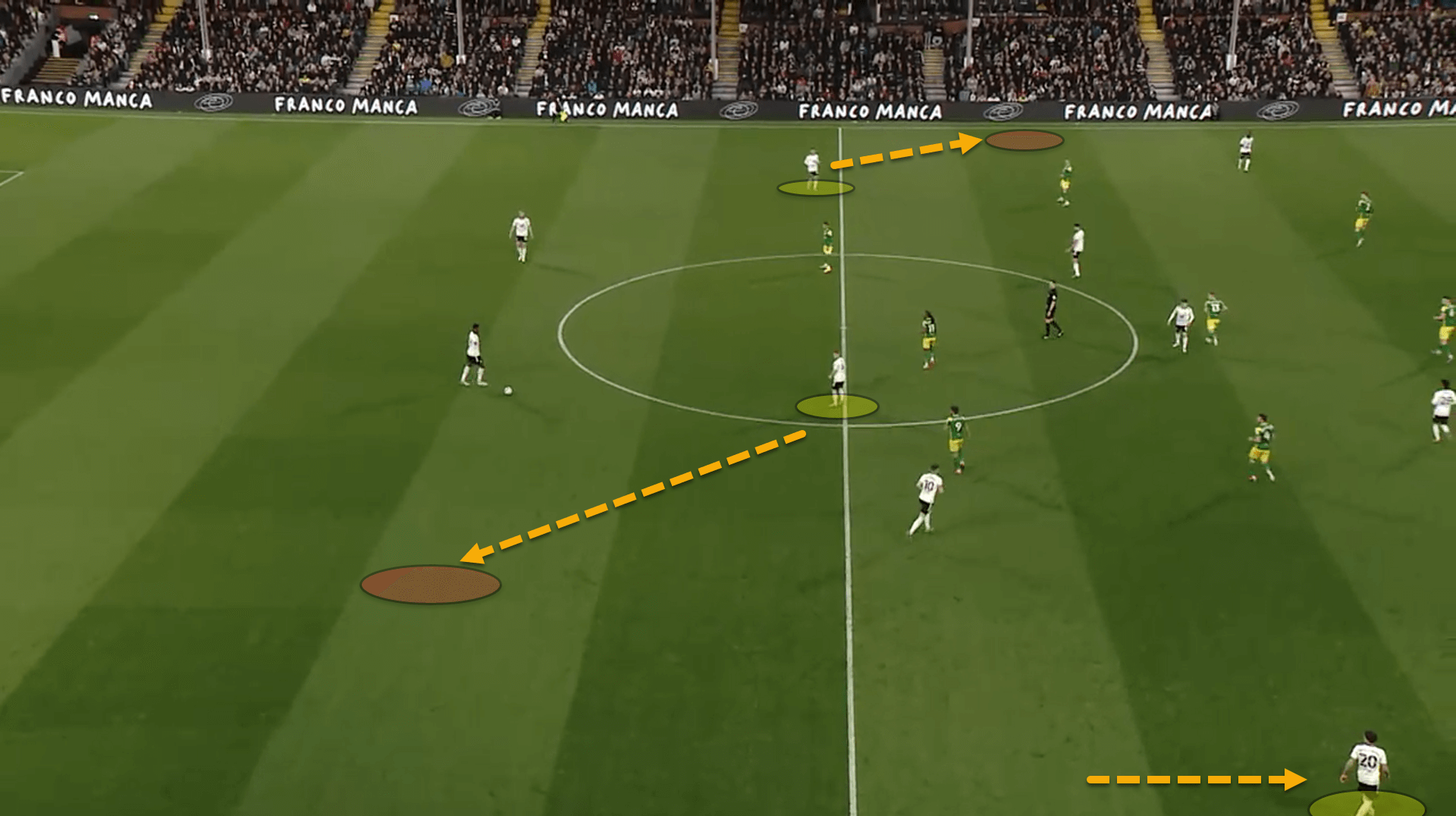
Marco Silva takes a very Pep Guardiola-esque approach to his 4-3-3 compared to a manager like Jurgen Klopp. Where Klopp instructs his wingers to invert into the halfspaces, Guardiola and Silva generally prefer their wide players to stay on the outside, allowing the number ‘8’s to occupy these halfspace areas.
For positional play to be effective, a team needs to have positional superiority. Essentially, this is when a player is in an optimal position between the lines with both time and space to receive a pass and then release the ball to a teammate.
Fulham will always have at least three players positioned in the space between the lines, looking to gain this positional superiority by creating passing angles to receive the ball.
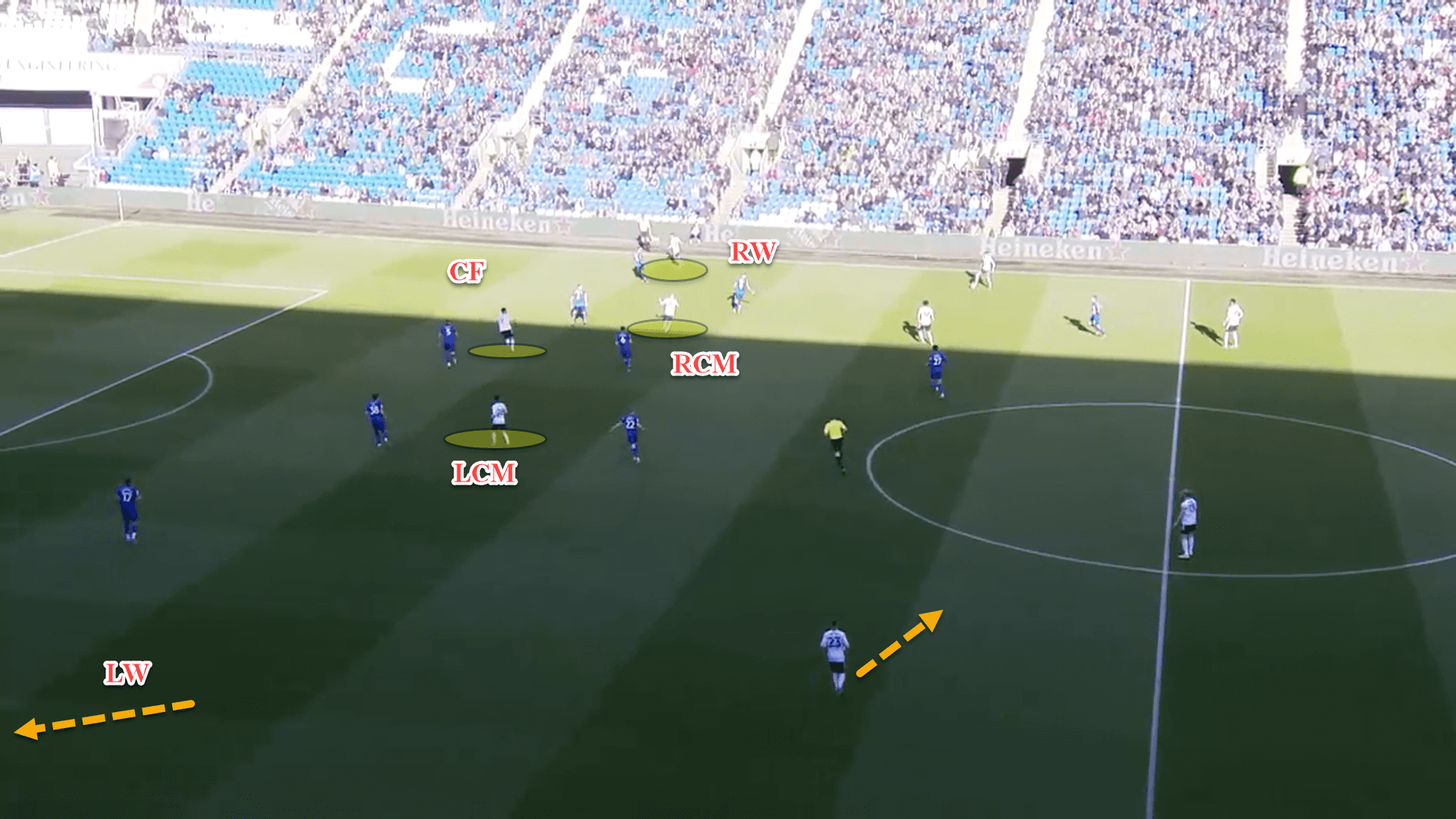
With their structure, the Lilywhites’ shape resembles a lopsided 3-2-5/2-3-5 which, again, is very close to home for those who are familiar with Man City’s positional structure in the attacking phases under Guardiola.
Having marvellously technical players such as Carvalho, Reed and Mitrovic in these areas certainly adds to the possibility of Fulham being able to pass the ball and create chances in these spaces.
Another benefit of having players in these zones, especially by positioning two ‘8’s in the halfspace, is that it forces the opposition’s defensive block to close up and remain compact as the defending team tries to prevent passes into these areas. However, in order to gain something, you must sacrifice another and so the opponent leaves space on the flanks which Fulham like to take advantage of.
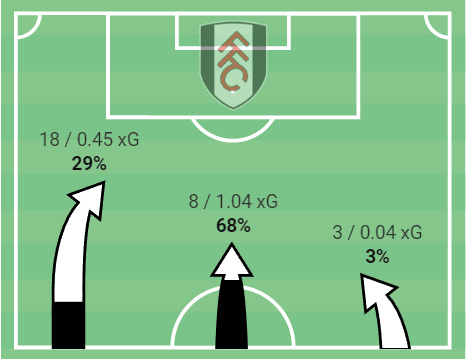
This data visualisation displays the area of all 29 of the Londoners’ positional attacks from a recent outing against Preston. 21 were on the flanks with just 8 coming through the middle.
Ultimately, Fulham create overloads in the wide areas as they look to create space to cross the ball. Once a crossing opportunity arises, there is just one instruction from the manager: Get that bloody ball to Mitrovic!
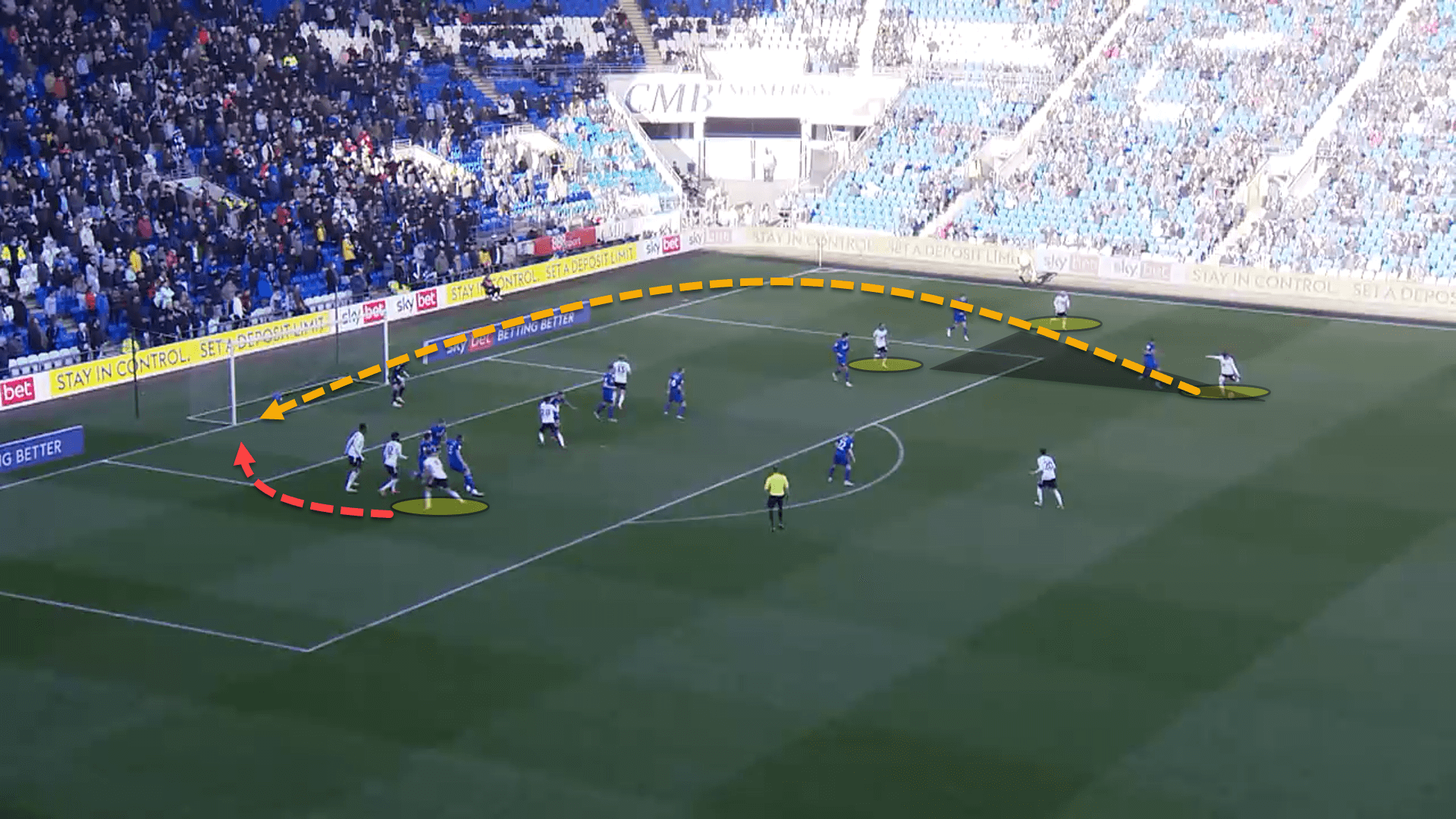
Mitrovic’s movement in the box is stunning, educational, and downright impressive. There is not a defender in England that could handle the Serb on the form he is currently in and the service from the flanks has aided him in becoming one of the most prolific strikers in Europe this season.
Pressing and counterpressing
A manager being keen on ball retention cannot expect his side to execute this without having an efficient rest defence structure for moments where possession is lost. While attacking in the opponent’s half of the pitch, Fulham push their entire structure very high.
Generally, the two centre-backs sit well inside the opposition’s half and operate almost as two deep-lying playmakers in possession. This allows the team to counterpress effectively once the ball is lost as there are numerous players in close proximity to press.
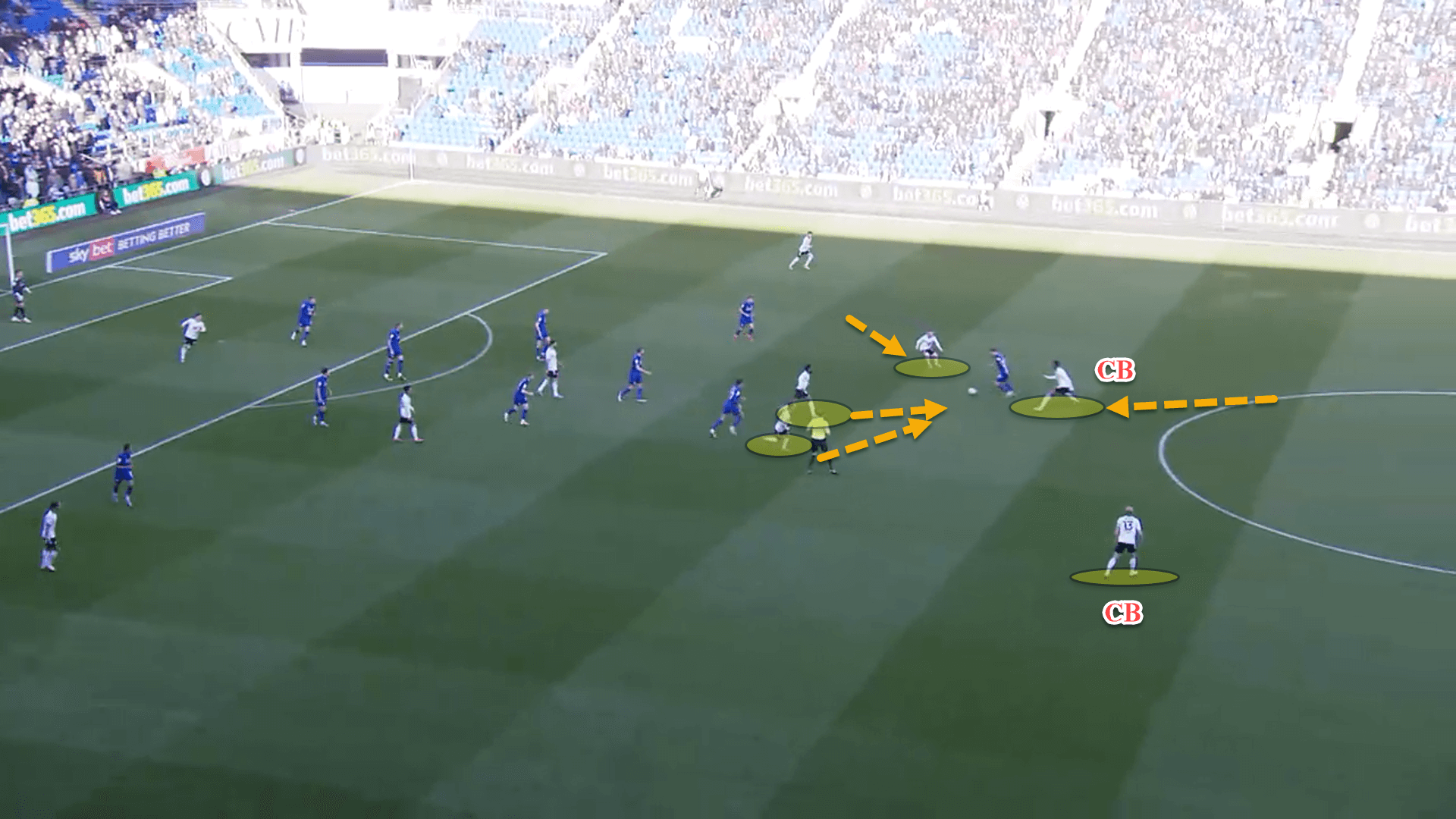
In this instance, Cardiff City regained hold of the ball and were looking to transition quickly. The ball was played into the feet of the Welsh side’s striker but Fulham’s nearest centre-back Adarabioyo stepped up instantly, alongside several other teammates, and the Cottagers were able to win the ball back.
This was only made possible by the central defender being positioned so high up the field. Of course, there is an obvious downside to such an extreme rest defence structure which is that the team are susceptible to well-performed counterattacks.
Fulham press high in general. There is a clear emphasis from the manager that he wants his players to apply pressure to their opponents as high up the pitch as possible in order to stifle build-up play.
The Lilywhites’ Passes allowed Per Defensive Action (PPDA) this season in the Championship stands at 9.59, the eighth-lowest in the league. Furthermore, they boast a challenge intensity of 6.6 which is roughly the division’s average. Basically, Fulham do press high but not as intensely as a side like Luton or Bournemouth.
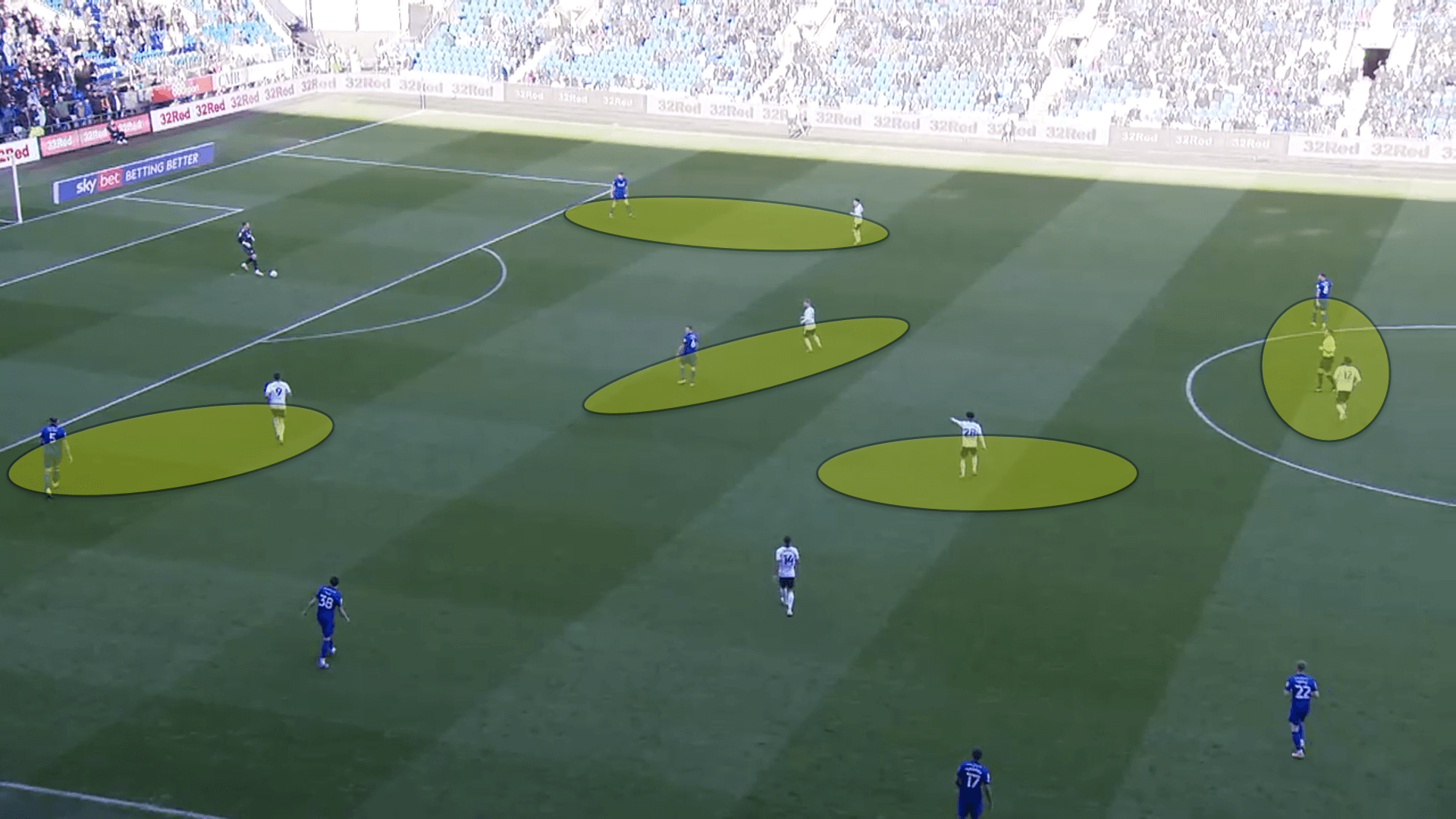
This is because Fulham use what can be labelled as space-oriented man-marking, or zonal man-marking. The players are each given a zone to defend on the pitch within their defensive structure and must man-mark any player from the opposition that moves into this space.
For example, Silva’s men set up in a 4-3-3 against Cardiff recently but pressed in an awkward 4-3-1-2 shape to combat the Bluebirds’ peculiar build-up shape. The structure changes depending on the opponent’s formation and the players may be given a different area of the pitch to mark in each game.
As the team drop down into a lower block, Fulham’s approach becomes much more Mourinho-like. Silva stays true to the Spanish and Dutch methodology of football in possession but prefers to revert back to his Portuguese roots in the defensive phases.
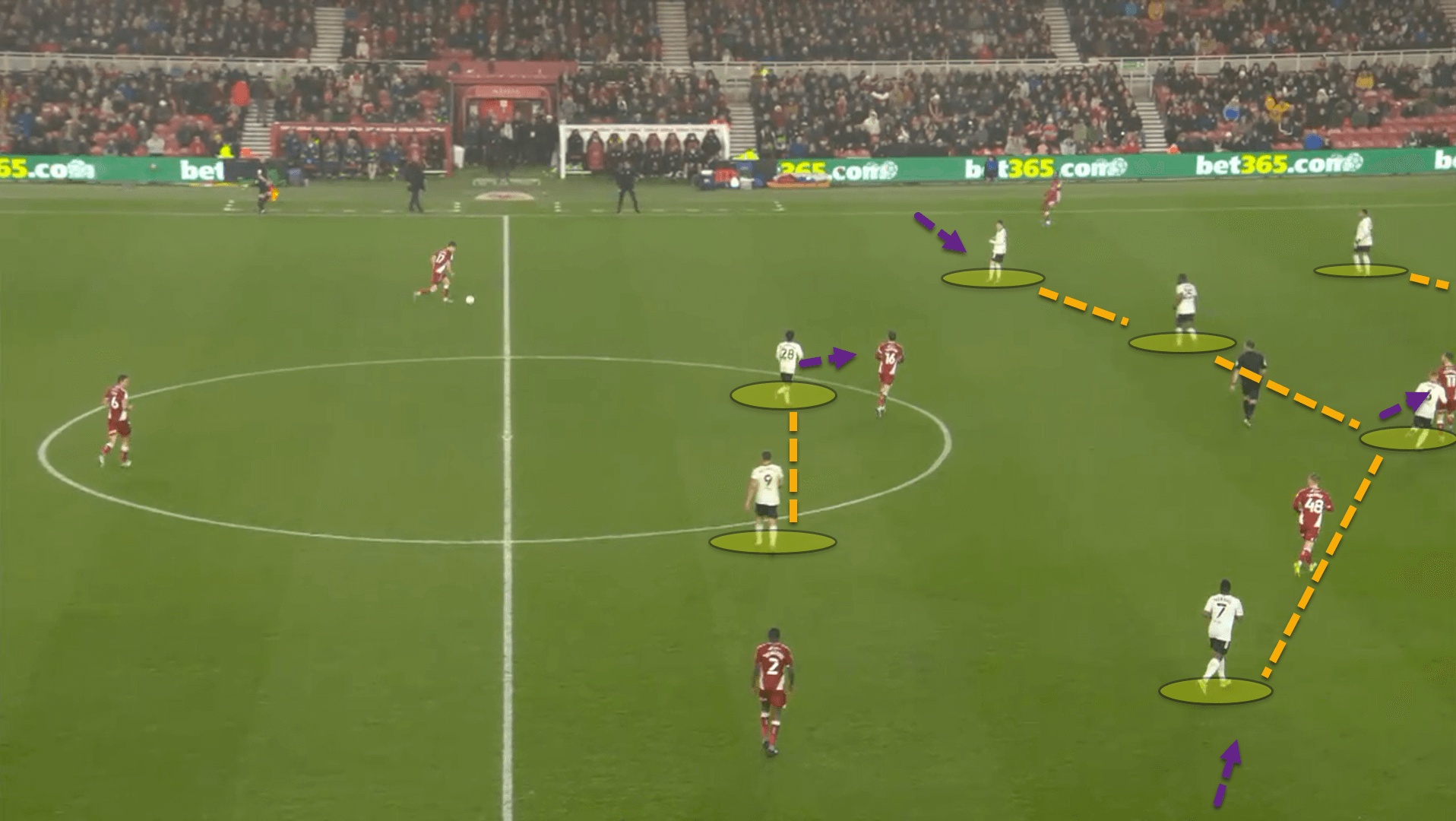
Fulham use a zonal defensive block in the deeper areas of the pitch. If the team’s base formation is a 4-2-3-1, it will become a 4-4-2 in these areas, whereas their 4-3-3 will become a 4-5-1.
There is no rush to press the opposition’s centre-backs or fullbacks. The players are simply tasked with protecting the centre of the pitch, ensuring that the attacking side cannot gain access to anyone positioned between their lines.
Naturally, this will leave space on the flanks for the team in possession to try and create crossing opportunities. To combat this, Fulham’s wingers drop back almost as auxiliary wingbacks and forge a temporary back six in the low block phase.
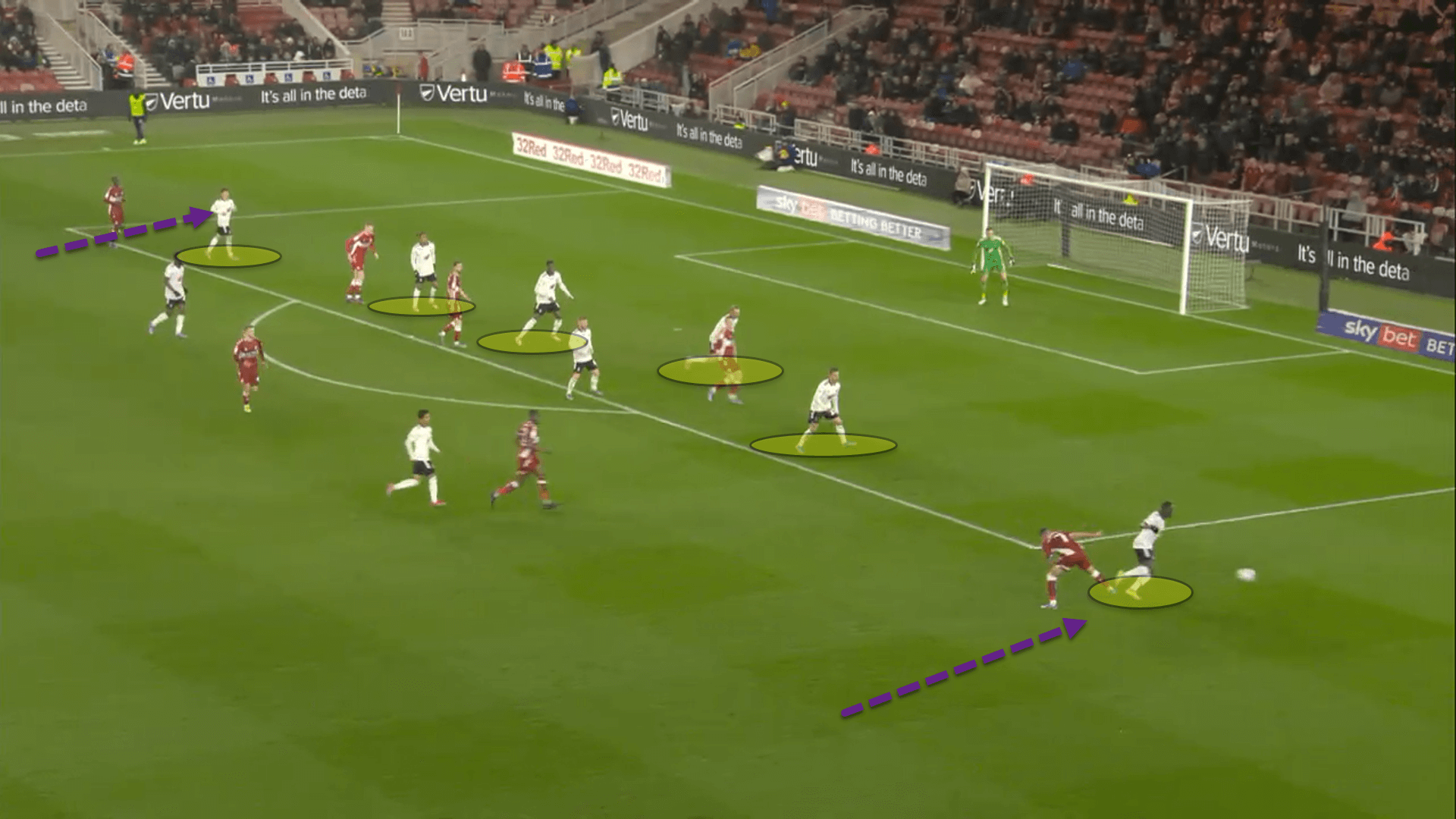
The side’s defensive approach certainly works too as Fulham have conceded just 39 goals this season in the Championship which is the second-lowest behind Nottingham Forest. The Cottagers even boast the lowest expected goals against in the league with 42.47 over the course of the campaign.
Conclusion
England’s second tier is arguably one of the most gruelling in European football. Earning promotion can be a slugfest where teams limp to the finish line. However, Fulham have achieved this feat with absolute aplomb.
Tactically, the side are a thing of beauty for the game’s modern formalists. Silva has splashed the glass with some Spanish sparkle, a dash of poised Portuguese pragmatism and some bog-standard British belligerence, all blended into one stunning cocktail primed and ready for Premier League football.






Comments